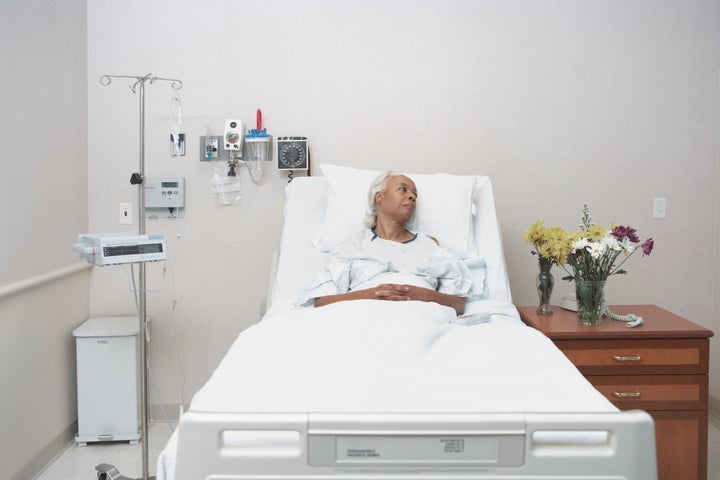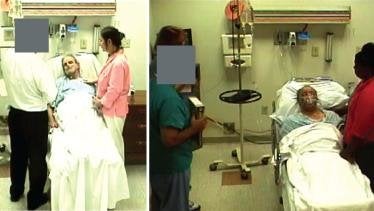
Could the color of your skin affect the medical care you get at the end of your life?
A disturbing new study published in the January issue of the Journal of Pain and Symptom Management suggests that it might. The research shows that black actors who were asked to portray dying hospital patients received less compassionate care from real doctors than did their white counterparts.
Researchers recruited 33 hospital-based doctors from western Pennsylvania and placed them in "high-fidelity" simulations in which they interacted with the actors, who read from matching scripts and exhibited the same simulated vital signs. Each "patient" was accompanied by another actor portraying a family member.
The doctors knew they were involved in a study, but didn't know what the researchers were looking for.
"Although we found that physicians said the same things to their black and white patients, communication is not just the spoken word," wrote Dr. Amber E. Barnato, an associate professor at the University of Pittsburgh School of Medicine and the study's senior author. "It also involves nonverbal cues, such as eye contact, body positioning and touch."
And that's where the doctors in the study let their black "patients" down, the research suggests.
When interacting with whites -- explaining their health condition and what the next steps might be -- the doctors in the simulations tended to stand close to the bedside and were more likely to touch the person in a sympathetic way.
With blacks, the doctors were more likely to remain standing at the door of the hospital room and to use their hands to hold a binder -- a posture that could make them appear defensive or disengaged.
The researchers analyzed audio and video recordings of the interactions and gave each doctor a score for his or her nonverbal behavior. On average, the doctors scored 7 percent lower for their interactions with blacks than for their interactions with whites.

Did the race of the doctor have anything to do with how he or she interacted with patients? Since most of the doctors in the study were white, it was impossible to tell. But previous research, including a landmark 2003 study, has shown that communication between doctors and patients tends to be better when they are of the same race.
The real question is what can be done to help blacks get better end-of-life care in the real world and to eliminate other well-documented racial disparities in health care.
This new study may not only explain why many black patients say they experience discrimination in health care, Barnato said, but could also help explain why blacks are more likely than whites to choose extraordinary life-saving treatments over measures that are aimed at easing suffering, like hospice care.
That choice can mean needless suffering not just for patients, but also for their loved ones.
"When black and white patients receive more intensive treatment at the end of life than they prefer--for example in the ICU--it may result in various types of 'suffering'--including post-traumatic stress disorder among the bereaved family members," Barnato told The Huffington Post in an email.
Barnato said that self-awareness and compassion are key for reducing these disparities, and the ongoing national conversation about race could help.
It might be even more powerful if health care providers experienced "some kind of experiential learning," Barnato said. "I wonder if having the doctors watch their own videos would be useful."
Also on HuffPost: The Quality Of Health Care You Receive Likely Depends On Your Skin Color

